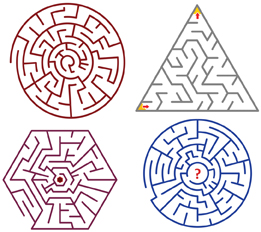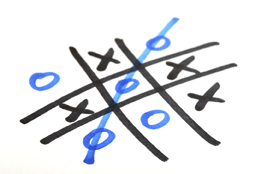Module 1 Project
1. Module 1 Project
Module 1 Project
Project Overview
Purpose
In this project you will analyze and relate logic puzzles to the concepts studied in this module.
Process
Towards the end of each lesson, under Project Connection, you may be prompted to complete a part of the Module 1 Project. You can access the entire project from this page at any time.
Make sure to save all work from each Project Connection in your course folder. You will submit your Module 1 Project to your teacher at the end of Module 1. Check with your teacher about how you should submit your project work before you begin the project.
Presentation
The most important part of your project presentation is clearly explaining and supporting your reasoning with relevant visuals and calculations. Make sure to show all your work.
Review the Module 1 Project Rubric to ensure you understand how you will be assessed on this project.
You can choose any format you prefer for the final presentation of this project. Some options include a written document, virtual or real poster, website, or video.
Project Introduction

Vasyl Torous/Hemera/Thinkstock
The purpose of this project is to apply your understanding of problem-solving strategies to analyze puzzles and games that involve numerical and logical reasoning, as well as solving problems that involve the application of set theory.
Part 1
Create a logic puzzle similar to “Example 1” on page 40 of the textbook. Use the example as your blueprint as you create your own puzzle. You may find it helpful to use the multimedia piece titled Hailey’s Solution in order to complete this activity. Be creative and have fun with your puzzle!
Use the following guidelines to successfully complete the puzzle:
- Your puzzle must involve the principle of inclusion and exclusion and must have a minimum of seven clues to help solve the puzzle.
- Ensure that your puzzle is solvable by having a classmate or other appropriate partner try to solve it.
- While you observe your partner solving the puzzle, record the strategies used in the puzzle solution.
- After your partner has solved the puzzle, discuss which clues worked well and which clues may need a bit of improvement. Make these revisions to your puzzle.
You must include the following elements in your puzzle:
-
clear and concise clues to your puzzle
-
a detailed solution to your puzzle, which should include all diagrams, charts, formulas, algebraic steps, and a description of the logic used in solving the puzzle
![]() Save your logic puzzle in your course folder. Then return to Lesson 1.
Save your logic puzzle in your course folder. Then return to Lesson 1.
Part 2

Sascha Burkard/Hemera/Thinkstock
There are many places on the Internet where you can play tic tac toe against a real opponent or a computer. Enter “tic tac toe” in your favourite browser and research sites where you can play the game. Play several games.
As you play the game, you may discover different strategies for different cases. Record your strategies for the following cases:
-
you go first
-
your opponent goes first, placing the x in a corner
-
your opponent goes first, placing the x in the centre
![]() Save your strategies in your course folder. Then return to Lesson 2.
Save your strategies in your course folder. Then return to Lesson 2.
Part 3

Comstock/Thinkstock
A famous logic puzzle is called prisoners and hats. Research the puzzle and rewrite it for a student who is in Grade 5, 6, or 7. Include some hints to solve the puzzle.
Test the puzzle on a younger student in Grade 5, 6, or 7. Record the strategy that the student used in order to solve the puzzle. Explain how you were able to guide the student to the solution without giving the puzzle away.
![]() Save your strategies in your course folder. Then complete the conclusion.
Save your strategies in your course folder. Then complete the conclusion.
Conclusion
Once you have completed the prisoners and hats puzzle, write a brief conclusion to your Module 1 Project. Include a personal reflection of what you feel you learned from the project during and after completion. Be sure to explain why you felt the way you did.
Project Assessment
Your Module 1 Project will be evaluated by your teacher using the evaluation guidelines in the project rubric. Read the rubric carefully. Make sure you are aware how you will be assessed. You can print or save a digital copy of the Module 1 Project Rubric as a guide to help you complete your project.
Don’t forget to submit your completed Module 1 Project to your teacher at the end of Module 1.
